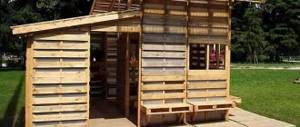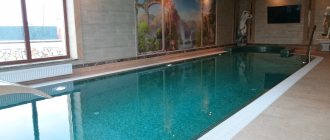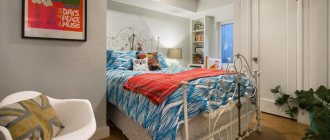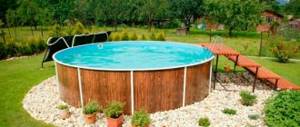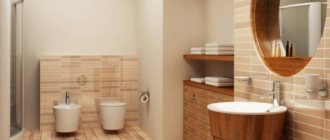Suitable materials
Today, the range and price range of building materials make it possible to choose the best option for preparing a structure for winter. Conventionally, gazebos are divided into:
Therefore, when choosing materials, it is worth considering the type of construction.
Metal frames
They are used for glazing gazebos and closed terraces.
Depending on the functions performed, there are 2 types of glazing with metal profile frames.
- Cold. Its main task is to close the gazebo or veranda for the winter from the effects of environmental factors in the form of precipitation, gusts of wind, and dust. But when ordering and installing double-glazed windows, you need to ensure that they have a large number of sashes. After all, if there are none, then in the warm season a real bathhouse will form in the gazebo. Therefore, this is a good budget option for protecting the structure in the spring and summer.
- Warm. The type of glazing assumes year-round use of the building. The material used is double-chamber double-glazed windows, which have a heat-saving effect. Owners of country houses set up a winter garden or install a fireplace on such a veranda or terrace.
However, a warm type of glazing should be chosen only if the room needs to be constantly provided with heat.
Construction awning
A simple and cheap way to protect against snow and rain is to use a construction awning, which is suitable for gazebos and open-air terraces.
The film is a durable material that can easily withstand sudden temperature changes and excessive humidity. She doesn't get wet. However, it does not allow sunlight to enter the room. The recommended temperature range for use is from -40 to +75 0 C. The film is wear-resistant. In case of a breakthrough, you can apply a patch or seal it. Quite light in weight. The edges of the awning are equipped with metal rings, which are used to fasten the material to the surface of the structure.
The only drawback of the awning is its unaesthetic appearance, so lovers of design solutions and decoration should pay attention to other options.
Sheer PVC curtains
An inexpensive type of protective cover for gazebos or terraces, the properties and technical characteristics are similar to a construction awning. Due to its light weight, it does not cause difficulties during installation. Curtains will protect from gusts of wind, snow and insects.
But we must not forget about the need for ventilation inside in order to avoid the formation of a steam room.
The main disadvantage of PVC shelters is its instability to low temperatures. During frosts, stretched curtains begin to crack and narrow, and breakouts may appear. Not recommended for use in regions with frosty winters.
-
Frameless double glazed windows
Such a stylish building shelter, in addition to its unusualness, has many other practical advantages:
- in a room glazed in this way, the maximum amount of sunlight penetrates, thanks to which the gazebo will become bright, and you can significantly save on energy costs;
- double-glazed windows have increased strength, so you should not be afraid that throwing a stone will damage a wall or window;
- protect from snow, rain, wind and street dust;
- the viewing area of the territory expands;
- custom-made double-glazed windows clearly follow the shape of the building;
- the doors open to the side.
- the material fits tightly together, due to which it retains heat well inside the building;
- they weigh little and are therefore easy to use;
- create sound insulation.
Type of gazebos
The types of structures can be very different, for example, the very popular Finnish gazebos. They are divided into:
- ordinary wooden small gazebos;
- very popular grill houses.
Finnish grill house
The grill house is similar to a hunting building with a foundation and glass windows. Such gazebos are usually made from timber or carriage. The traditional shape is hexagonal with an insulated hexagonal pyramidal roof.
Photo 5 – Finnish grill house
Finnish gazebos are made from natural building materials, and the interior may look like this:
- benches or wooden beds are installed along the walls and covered with animal skins (can be replaced with pillows);
- in the center of the gazebo there is a multifunctional oven, which includes a grill, barbecue, smokehouse, spit and all kinds of devices for cooking over a fire;
- A large hexagonal tabletop is installed around the stove, where guests can sit comfortably and cook whatever they like on their own.
Photo 6 – Interior of the Finnish grill house
Chinese gazebo
Chinese gazebos look very original. Prefabricated structures reflect the traditions of oriental architecture and are a symbol of the harmony of man, nature and art. The buildings are decorated with a variety of lanterns and painted in different colors. Each shade has its own meaning, for example:
- red - will bring the owner good luck, vitality and prosperity;
- gold - will provide glory, progress and prosperity to the owner;
- black is honor and dignity.
The ancient Chinese believed that curved lines drove out demons and evil spirits. Hence the original shape of the roof. But it is also very functional. In summer it provides free access of air and creates a pleasant coolness due to its movement, and in the rainy season it removes flowing flows from the walls and foundation.
Photo 7 – Chinese gazebo
Multifunctional gazebo
We present to your attention other examples of cozy and multifunctional gazebos for relaxation. For example, as in the next photo, the gazebo is a real country chic, which is divided into a kitchen, dining room and relaxation area. Made from timber and modern environmentally friendly materials.
Photo 8 – Multifunctional gazebo
Or maybe there is a pond on your property and you would like such a place to relax?
Photo 9 – Open frame tent
$ The price of gazebos can be very varied and it depends on:
- size of the building;
- quality and quantity of materials;
- cost of work performed;
- interior
The cheapest option is a folding garden tent:
- 290 hryvnia or
- 900 rubles.
The above presented open frame tent with interior and turnkey work will cost the future owner:
- 15,000 hryvnia or
- 48,000 rubles.
You can buy a ready-made gazebo or make an exclusive order, the likes of which you will not find anywhere else.
Features and stages of work
When constructing a gazebo, builders use wood, timber, stone, plastic, and brick as materials. But it is wooden gazebos that are in demand among consumers. Because they are easy to install, have a long service life and low cost.
But you need to remember that wood is not a moisture-resistant material. Therefore, to protect and use the building in winter, you need to properly insulate the walls, ceiling and flooring.
It is not recommended to carry out work on the outside of the building, so as not to spoil its appearance and finish.
To obtain high-quality thermal insulation, it is worth touching all elements of the building (floor, walls, roof), using the services of craftsmen, or with your own hands.
What are the advantages and disadvantages of metal gazebos?
The variety of designs, shapes and colors, naturally, is one of the advantages of such buildings, but this is far from the main advantage. Durability is also worth mentioning. After all, metal is not afraid of fire or water, it is not affected by termites and fungal diseases, which cannot be said about wood. Steel and aluminum elements have anti-corrosion properties. And if you apply a protective coating on them, then more than one generation of dacha owners will rest in them.
Durable metal gazebo
Any type of foundation is suitable for such gazebos, and if you wish, you don’t have to fill it at all. Thanks to its fire-resistant properties, it becomes possible to install a barbecue inside or nearby without unnecessary precautions. A rigid frame protects the structure from changing geometric shapes due to soil subsidence, landslides, etc. You can sheathe the sides and cover the roof from any material - slate, polycarbonate, corrugated sheet.
Slate roof
However, to build such a gazebo yourself, you must have metalworking skills. Welding is often required to secure elements. If you don’t know how to use such equipment yourself, you will need to look for a specialist. The second disadvantage is the high cost. Metal also gets very hot in the sun, so it is better to install such buildings somewhere in the shade.
Methods for covering and insulating gazebo walls
You can protect the walls of a structure from precipitation using:
When covering the walls with a blockhouse, it is recommended to leave small openings near the floor, which will improve air permeability and prevent the accumulation of excess moisture.
Budget options for protecting dacha structures from the influence of the external environment save the financial resources of the owners. And with a little skill and imagination, they will become a stylish place for family relaxation at any time of the year.
Closed gazebos are an intermediate link between a garden house and a gazebo for a summer residence. In this design, the walls can be insulated and the room can be heated during the cold season. And using materials made of brick or stone in the construction of a building, you won’t even be afraid of winter.
Construction of a gazebo
In addition to those listed, you can choose a gazebo made by yourself and not spend a lot of money on purchasing a forged structure.
To begin with, you need to create a drawing and purchase materials; it is also advisable to contact a person who skillfully handles a welding machine.
Next, you need to create individual elements of the gazebo; we are talking about elements that will add aesthetic beauty to the gazebo. After this, you need to put everything together using a welding machine. By the way, creating a gazebo with an arch would be a great idea.
At the end, after the structure has been assembled and installed, it is advisable to treat the structure with special paint mixtures so that the metal does not corrode so quickly.
Gazebos
For some, a country house is a place of residence, for others it is a place for growing crops, for others it is simply a recreation area. You can build gazebos and terraces with your own hands or hire specialists.
First you need to decide what type of building it will be, what material it will be made of and how it will be equipped. There are a huge number of types of them.
In some you can just sit on a bench under a canopy from the sun, and in some you can spend quality time swimming in the pool or jacuzzi, grilling kebabs and relaxing on high-quality hammocks or swings.
A terrace differs from a gazebo in that it is adjacent to the house. Such an extension can be of several types:
- Open, which can only be used in the warm season.
- Closed, which allows this room to be used all year round.
- Universal, having a specific design that can be opened.
The disadvantages of gazebos include their impracticality. For example, in a small open-type structure, you won’t be able to relax in winter. In this case, it is better to have a closed terrace or veranda with a stove.
Interesting ideas for arranging terraces can be viewed on our website. Open buildings are often used for eating, sleeping in the fresh air, and meeting with friends. In closed terraces you can fully live, as if in a separate room.
Building a terrace
As in the construction of any other object, reliable foundation support is also required here. When a residential building is designed with a terrace, everything is much simpler - the foundation in this case is a single structure.
But what if the house has been in use for a long time, but you want to build a terrace only now?
So:
- If we take into account that summer cottages and country houses are often located near natural bodies of water, then the most optimal type of foundation will be piles. This is especially true if the ground surface marks have significant differences - for example: not far from the house there is a descent to the river.
Ceramic terrace covering
- Due to the pile heads protruding above the ground surface, it is very convenient to minimize this difference and even level the marks. If the site for the construction of a terrace is flat, and it itself should be adjacent to the house, then its supporting part should be buried in the same way as the foundation of the main building.
A terrace located separately does not depend on the design features of the house and is built based solely on considerations of reliability and ease of use.
Foundation and piping
The choice of support design is also made depending on the covering option for the future terrace. If you want to cover it with tiles, clinker bricks, or, for example, stone paving stones, the type of foundation: monolithic slab is best suited for this purpose.
This option is quite expensive, but there are situations when this is the only right choice.
- For decking, point supports are more convenient, and they are much cheaper, and therefore we will consider the option of making a pile foundation of the Tise design. To equip it, asbestos-cement pipes are used, which are inserted into pre-drilled wells. Their diameter is selected based on the dimensions of the terrace - the minimum is 150 mm.
Asbestos pipe foundation
- Asbestos pipes are available in two lengths: 2950 m and 3950. There is no need to deepen them to this level - it is enough if the wells are drilled at a level of 1.5 m. This depth corresponds to the level of soil freezing in most regions of the country.
- At what height the heads should be depends on the topography of the site and the design of the terrace. The excess length of the pipes is simply cut off with a grinder. The process of installing a pipe foundation looks like this.
The pipe is installed in the well, leveled vertically and covered with soil along the outer perimeter. A spatial frame connected from four reinforcement bars is inserted into its cavity, after which the concrete mixture is poured.
Anchoring
If the terrace frame is made of metal or wooden beams, the reinforcement should be completely hidden inside the pile. In this case, to fasten the frame beams or pillars supporting the terrace canopy, embedded parts are installed into the unhardened concrete - for example: anchor bolts. The version of the embedded part depends on the dimensions and weight of the racks.
- To fasten wooden beams, bolts with a fork-shaped plate at the end are provided. If you need to fix a metal I-beam, an anchor block consisting of four bolts tied around the perimeter is placed in the pile. The blocks come in different sizes, and you can choose the option for the desired cross-section of the piles.
Embedded parts: anchor block
- A thick steel plate with holes for anchors is welded to the end of the metal stand. Then it is placed in the design position, securing the connection with nuts. By the way, the foundation can be built not from pipes, but using metal screw piles.
The cost will be about the same, but you won’t have to install embedded parts. In this case, the plates to which the racks are attached can be welded directly to the pile heads.
Concrete platform for the terrace
The base for a terrace, which is being built on a site with a slope, as well as in a situation where groundwater is close, is better to be concreted. In this case, the outlets of the reinforcement from the piles are left on the surface - in such a way that with their help they form a monolithic connection with a horizontal layer of concrete.
- If there is a gazebo on the terrace or a canopy is being built, preparation of the base for pouring concrete begins after the vertical elements of these structures have been installed. First, only installation is carried out, and finishing is carried out after the completion of concreting work.
Preparing the base for a concrete platform
- The procedure is as follows: the fertile layer of soil is completely removed from the soil surface and formwork is installed. It can be made of plywood, OSB boards or assembled from wooden panels. If the area for the terrace does not have differences in elevation and there is no need to make stairs, concrete curb stones can be installed as permanent formwork.
- Then, approximately 20 cm in height, the sand and gravel cushion is poured and compacted. The next stage is reinforcing the base. Reinforcement bars are laid in the longitudinal and transverse directions and tied with wire.
- Of course, builders use a special tool - it’s called a gun for tying reinforcement. With its help, tying a knot does not take even a second, and accordingly, the work progresses five times faster than tying by hand.
Concreting the terrace
- Next, all that remains is to pour the concrete mixture into the formwork. To prevent the base from being destroyed under the influence of moisture and temperature changes, a water-repellent anti-freeze additive must be added to it, for example: Penetron Admix; Kalmatron-D; Penetrat-Mix.
Before tiling the base can be done, you will have to wait at least a week after concreting. But it will be possible to load concrete: install a canopy, cover metal beams with stone, or, for example, build a barbecue oven only after it has gained full strength.
Terrace with decking
If a terrace, which is a deck made of heat-treated or composite wood, is to be built on open ground, it also needs a foundation. It is best if these are metal screw piles. After pouring concrete, a frame made of a square steel profile is welded to the ends and all metal elements are primed with alkyd enamel.
So:
- When a terrace is built on a solid concrete foundation, for example: it is attached to a house around which there is a wide concrete blind area or asphalt, the logs are laid on adjustable supports, which you see in the photo below.
Adjustable point supports for joists
- To construct supports, you can also use wall blocks made of heavy concrete, half buried in the ground and laid on a sand-concrete mixture. In general, the choice of foundation option for a terrace is made based on the specific conditions on the site and the height to which its surface needs to be raised. But the distances between point supports are standard and should not exceed 40-50 cm.
- The logs are laid on supports and done so so that when they are joined along the length, a gap of 20 mm remains between the ends. If the flooring is made of a composite material: decking or garden parquet, you can also purchase WPC logs with them. This material is not afraid of moisture, and the hollow structure of the wood-polymer beam promotes the outflow of rainwater.
Terrace, the frame of which rests on concrete blocks
- By the way, many experts believe that aluminum logs are much better - they are also resistant to corrosion and have higher strength. To avoid galvanic interaction between metals, rubber gaskets are installed between the main frame and the joists. They are attached to each other not by welding, but by self-tapping screws.
To fix the decking board to the frame, specially designed clips are used. They compensate for temperature gaps and prevent the flooring from rising during expansion. By and large, the process of laying decking is practically no different from the technology of laying laminate flooring.
Verandas
Gazebos, verandas and terraces are somewhat similar to each other, but at the same time they are completely different buildings.
The veranda is a full-fledged extension to the house, which is based on the foundation. As a rule, it is completely closed and plays the role of an additional room. The main difference between a veranda and a terrace is the presence of walls. Without them it will be a porch. This type of building can perform many functions, unlike other recreation areas:
- Living room.
- Dining room.
- Greenhouse or winter garden.
- Gym.
- Pantry.
- Kitchen.
In addition, the extension can perform many other functions, depending on the owner’s imagination. Summer-type verandas may have an open wall, which is covered with curtains, outdoor blinds or PVC film, like some types of gazebos.
How to build a metal gazebo with your own hands - step-by-step diagram
Step 1: Design
First of all, we decide on the type of structure and various details. Think about what you need, an open, closed or semi-open space? Will you install light and other communications into it? Decide on the sizes. Do you want to install a barbecue, or maybe a fireplace? Be sure to sketch out the project on paper, and do not forget to indicate all the details and dimensions. Only after this can you proceed directly to installation work. In the photo we offer an example of a schematic design.
Step 2: Select a location
If you want to make a corner for privacy, then a place somewhere at the end of the garden is better. But when your plans include spending days and evenings in the gazebo with your whole friendly family, then you can put it in the yard near the main house. This way you will have the opportunity to have lunch, dinner or just drink tea in nature, and if you forget something, you don’t have to run far. It is also desirable that the building be located in the shade of trees, this will make the pastime more comfortable. The soil should be level and preferably quite dense. If this is not the case, then you will have to carry out a set of measures to achieve the desired result.
Secluded corner at the end of the garden
Step 3: Preparing the Base
First of all, we clear the area for the future gazebo. We remove grass, roots of trees, bushes, all debris, and, if necessary, level the area. Then we remove a layer of earth of approximately 20 cm. Next, we fill the bottom of the formed pit with sand, 8 cm is enough, and compact it thoroughly. You can fill the entire area with cement mortar or lay it with paving slabs. If the area of the gazebo exceeds 2 square meters, then expansion joints should also be provided. To do this, when installing the formwork, we place boards every meter. Then we pour the concrete. After a few days, we dismantle the boards and fill the resulting gaps with liquid mortar.
Step 4: Installing Support Posts
There are two ways to build supports. In the first case, we dig holes about a meter deep in each corner of the future gazebo and fill their bottom with a sand-gravel mixture. Then we compact the “pillow” thoroughly and align the columns strictly vertically. We fix them in the desired position using stones, pieces of bricks, etc. We first paint the part of the posts that will be in the ground. Next, fill the holes with cement mortar and leave until completely dry. Periodically wet the concrete with water. This will prevent it from cracking.
According to the second method, you will have to pour a columnar foundation from concrete and embedded columns. Metal supports are welded to the latter.
Columnar foundation made of embedded columns
Step 5: Installing the Side Walls
We weld crossbars to the support posts. Between the horizontal elements we maintain a distance of just over a meter. Then everything completely depends on imagination and financial situation. You can sheathe the sides with clapboard, wood, or use polycarbonate. If desired, the crossbars can also be secured with bolts. This design can be disassembled in the future, but at the same time the bolted connections will have to be constantly tightened.
Step 6: Roof Installation
Polycarbonate is perfect for the roof, but any other roofing material can be used. It is necessary to ensure that during rains water does not get inside the structure, so we extend the logs beyond its boundaries by at least half a meter. Pre-drill holes in the rafters. Then we fix the polycarbonate sheets one by one. To make the structure more rigid, we also attach them to each other. How it should look as a result is shown in the photo.
Step 7: Refinement
This is the final stage in building a metal gazebo with your own hands. To give it a well-groomed appearance and at the same time protect it from corrosion, it is necessary to coat all metal elements with paint. Inside you can place benches, a table, and a barbecue. Sometimes in such buildings they even install an electric stove, and then the gazebo is used not only as a place to relax, but also as a summer kitchen. This solution is especially relevant during the sunset period.
- Author: Mikhail Malofeev
Rate this article:
- 5
- 4
- 3
- 2
- 1
(0 votes, average: 0 out of 5)
Share with your friends!
Terraces
Terraces and gazebos are mainly used in the warm season. The most popular type are small open terraces on which a table can be placed. Often they equip a children's playroom on it, installing a couple of carousels on the terrace. This allows children to play outdoors, and at the same time remain at home under the supervision of their parents.
Summer dacha gazebos and terraces are not just a relaxation area, but a place for aesthetic enjoyment of nature. For meditation, for reconnecting with the environment.
The construction process includes several main stages:
- Selection of territory and compacted soil.
- Choice of covering (most often wood).
- Determining the design and interior accessories.
- Construction of the foundation.
- Laying flooring.
- Finishing and decor.
Important! It is recommended to install the floor on the terrace at a slight slope to avoid water accumulation during rain and snow. This will extend the life of the structure.
How to decorate a wooden gazebo?
The most common option in Russia is wooden gazebos. They are relatively inexpensive and fit organically into the design of the site.
You can decorate a wooden gazebo:
- Wooden decorative grilles - for shade and privacy;
- Patterned carving - in the spirit of folk crafts;
- Climbing plants - grapes, honeysuckle, climbing rose, as well as plants in pots and containers;
- Curtains - this option is especially suitable for oriental style.
See examples of beautiful gazebos from this page and find solutions for your garden!
If you are just looking for ideas for renovation and arrangement or already know for sure that a gazebo is your option, we have collected for you 9,777 photos from real projects of interior designers, decorators and architects from Russia and around the world, including such proven professionals as the Architectural Bureau Sokolov Kirill and EVOKE. The beautiful gazebos in our photographs are the best examples of competent design and layout in different styles and colors. If you like any design option, for example the gazebo from the second photo, you can contact the author and order the ideal design project for yourself. See our photo gallery, look for inspiration and professionals, and you will see why Houzz is the best resource for apartment and home interior design, renovation, home construction, architecture and landscape design.
About gazebos with barbecue facilities
Modern types of gazebos have a barbecue inside. It's popular and practical. It’s nice to sit warmly by the fire on a cold winter evening and taste a delicious barbecue. The grill itself is usually made of brick.
The designs of closed gazebos with a barbecue installed inside will provide opportunities for both cooking and heating the building. Such a gazebo using a barbecue must necessarily have a chimney so that the smoke does not linger inside. A barbecue located in the center of the room will need a simple metal hood.
In the case of a barbecue laid out near one of the walls, the pipe is made of brick and goes out onto the roof. The structure must contain elements that prevent fire, that is, fire-resistant components must be used. For example, it is better to lay out the floor of a gazebo with a barbecue from ceramics. tiles
The walls of a structure with a barbecue can also be made of wood, but then the barbecue will have no place near them. There will be a real threat of fire. But in any case, wood material must be impregnated with a unique solution that imparts fire resistance.
Let's get down to the most important thing - building a gazebo. The construction of structures is done according to a single principle. The only distinctive feature is that closed gazebos are made with specific solid walls that protect in the future from unfavorable factors of nature, as well as the prying eyes of others.

